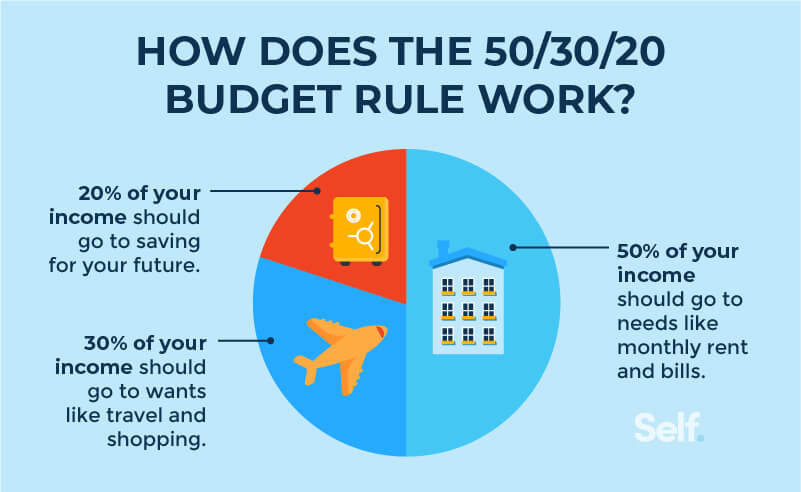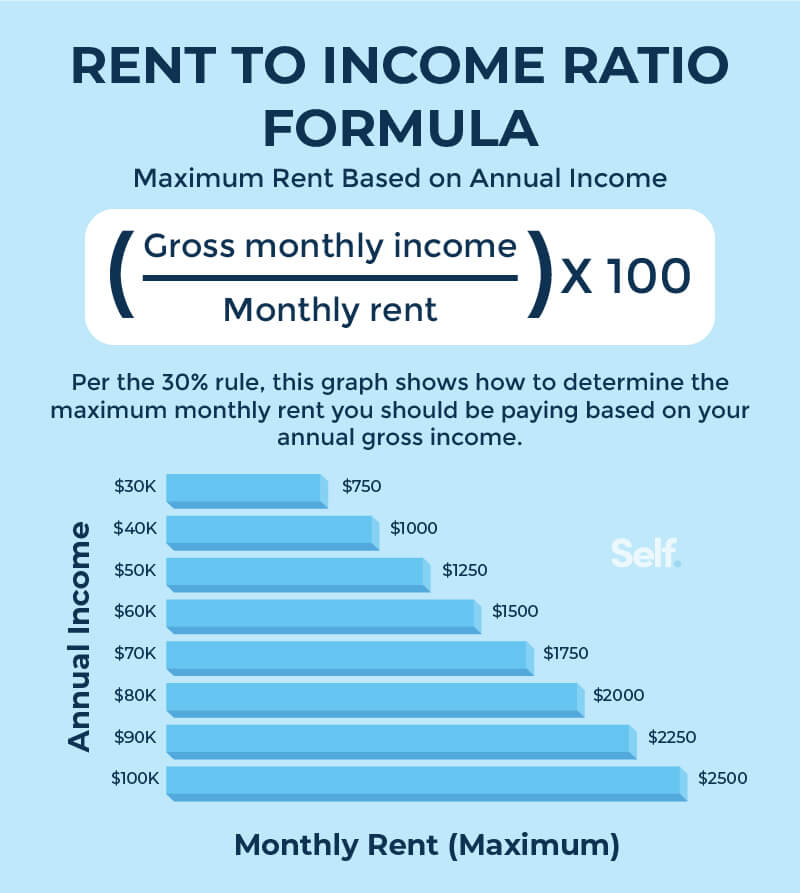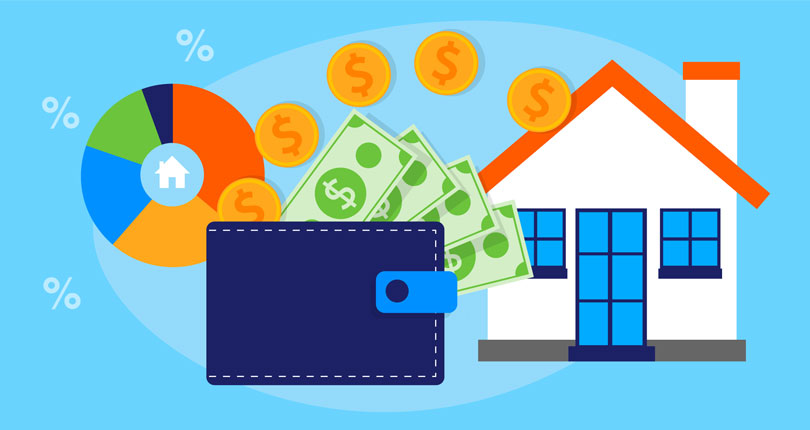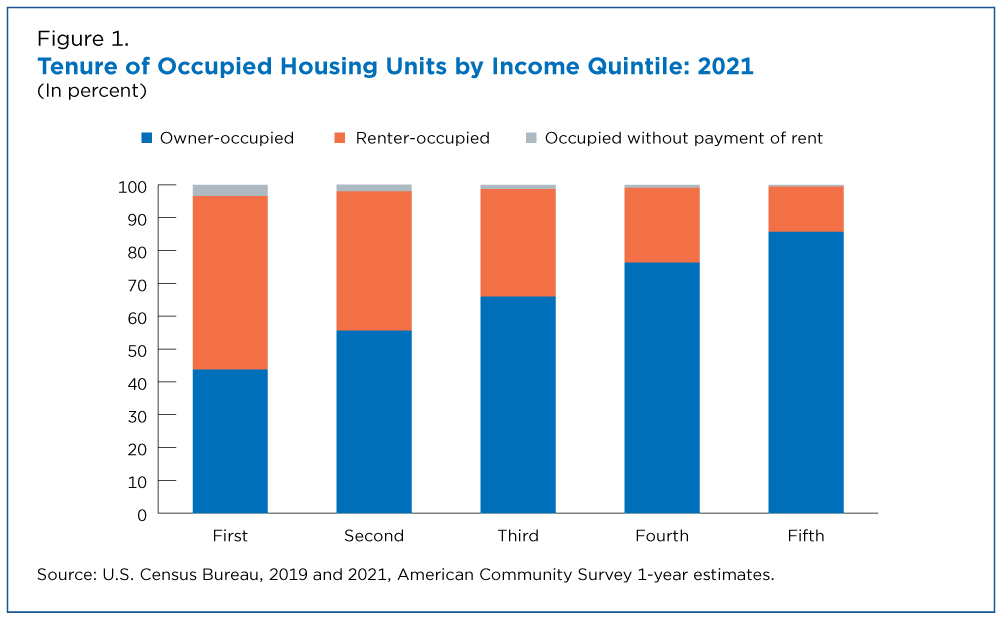Understanding the Rent Burden: Why It Matters
The concept of rent burden refers to the percentage of household income spent on rent. When rent payments exceed 30% of gross income, it can lead to financial stress and decreased quality of life. This phenomenon is often referred to as the “rent burden.” The rent burden can have far-reaching consequences, affecting not only an individual’s financial stability but also their physical and mental well-being.
Research has shown that households that spend more than 30% of their income on rent are more likely to experience financial difficulties, such as reduced savings rates, decreased disposable income, and increased debt. Furthermore, excessive rent payments can limit an individual’s ability to afford basic necessities, such as food, healthcare, and transportation.
The rent burden can also have a profound impact on mental health. When individuals are forced to allocate a large portion of their income towards rent, it can lead to feelings of anxiety, stress, and uncertainty. This can be particularly challenging for low-income households, who may already be struggling to make ends meet.
It is essential to recognize that the rent burden is not just a personal issue, but also a societal problem. When a significant portion of the population is struggling to afford rent, it can have far-reaching consequences for the economy and community as a whole. Therefore, it is crucial to address the root causes of the rent burden and work towards creating more affordable and sustainable housing options.
One way to address the rent burden is to calculate the ideal rent-to-income ratio. This involves determining the percentage of household income that should be allocated towards rent. The general rule of thumb is that rent should not exceed 30% of gross income. However, this ratio can vary depending on individual circumstances, such as debt obligations, credit score, and other financial commitments.
By understanding the rent burden and its consequences, individuals can take the first step towards creating a more sustainable and affordable housing plan. This may involve exploring alternative housing options, negotiating with landlords, or seeking assistance programs. Ultimately, addressing the rent burden requires a comprehensive approach that takes into account the complex interplay between housing costs, income, and financial stability.
How to Determine Your Affordable Rent Range
Calculating the ideal rent-to-income ratio is a crucial step in determining an affordable rent range. The general rule of thumb is that rent should not exceed 30% of gross income. However, this ratio can vary depending on individual circumstances, such as debt obligations, credit score, and other financial commitments.
To calculate the ideal rent-to-income ratio, follow these steps:
1. Determine your gross income: Start by calculating your total monthly gross income from all sources, including salary, investments, and any side hustles.
2. Calculate your rent-to-income ratio: Divide your monthly rent payment by your gross income, and multiply by 100 to get a percentage. For example, if your monthly rent is $1,500 and your gross income is $4,000, your rent-to-income ratio would be 37.5% ($1,500 ÷ $4,000 x 100).
3. Adjust for other debt obligations: If you have other debt obligations, such as student loans, credit cards, or car loans, you may need to adjust your rent-to-income ratio accordingly. A general rule of thumb is to allocate no more than 43% of your gross income towards all debt payments, including rent.
4. Consider other expenses: In addition to rent and debt obligations, consider other expenses, such as utilities, transportation, and food. These expenses can impact your ability to afford rent, so be sure to factor them into your calculations.
5. Explore alternative methods: While the 30% rule is a good starting point, there are other methods for determining an affordable rent range. For example, some experts recommend using the “50/30/20 rule,” where 50% of your income goes towards necessities like rent and utilities, 30% towards discretionary spending, and 20% towards saving and debt repayment.
By following these steps and considering your individual circumstances, you can determine an affordable rent range that works for you. Remember to regularly review and adjust your rent-to-income ratio as your financial situation changes.
It’s also important to note that the rent-to-income ratio is just one factor to consider when determining an affordable rent range. Other factors, such as the location, amenities, and condition of the rental property, should also be taken into account.
Ultimately, the key to finding an affordable rent range is to carefully consider your financial situation and make informed decisions about your housing costs. By doing so, you can ensure that you’re not overspending on rent and can maintain a healthy financial balance.
The Consequences of Overspending on Rent
Overspending on rent can have severe consequences on an individual’s financial stability and overall well-being. When rent payments exceed 30% of gross income, it can lead to a range of problems, including decreased savings rates, reduced disposable income, and increased debt.
One of the most significant consequences of overspending on rent is the impact on savings rates. When a large portion of income is allocated towards rent, it can be challenging to save for the future. This can lead to a lack of emergency funds, retirement savings, and other long-term financial goals.
Reduced disposable income is another consequence of overspending on rent. When rent payments are high, it can leave individuals with limited funds for other essential expenses, such as food, transportation, and healthcare. This can lead to a decrease in overall quality of life and increased financial stress.
Increased debt is also a common consequence of overspending on rent. When individuals are struggling to make ends meet, they may turn to credit cards or other forms of debt to cover essential expenses. This can lead to a cycle of debt that is difficult to escape.
In addition to these financial consequences, overspending on rent can also have a significant impact on mental and physical health. The stress and anxiety of struggling to make rent payments can lead to a range of health problems, including depression, anxiety, and cardiovascular disease.
Furthermore, overspending on rent can also limit an individual’s ability to invest in their future. When a large portion of income is allocated towards rent, it can be challenging to invest in education, career development, and other opportunities that can lead to long-term financial stability.
It is essential to recognize the consequences of overspending on rent and take steps to avoid it. By understanding the importance of maintaining a healthy rent-to-income ratio, individuals can make informed decisions about their housing costs and avoid the financial and emotional stress associated with overspending on rent.
Ultimately, the key to avoiding the consequences of overspending on rent is to prioritize financial stability and make informed decisions about housing costs. By doing so, individuals can maintain a healthy rent-to-income ratio and avoid the financial and emotional stress associated with overspending on rent.
Strategies for Reducing Your Rent Burden
Reducing your rent burden requires a combination of short-term and long-term strategies. Here are some practical tips to help you lower your rent payments and achieve a more sustainable housing situation.
Negotiate with your landlord: If you’re a good tenant, your landlord may be willing to work with you to reduce your rent. Consider negotiating a rent reduction or exploring other options, such as a longer lease term or additional amenities.
Explore alternative housing options: If you’re struggling to afford your current rent, it may be time to explore alternative housing options. Consider shared housing, community land trusts, or subsidized housing programs. These options can provide more affordable rent payments and a range of other benefits.
Seek assistance programs: There are a range of assistance programs available to help individuals and families with housing costs. These programs can provide financial assistance, counseling, and other forms of support. Consider reaching out to local non-profits or government agencies to learn more about these programs.
Consider a roommate: If you’re living alone, consider finding a roommate to split the rent with. This can be a great way to reduce your rent burden and achieve a more sustainable housing situation.
Look for rent-restricted apartments: Some apartments offer rent restrictions, which can limit the amount of rent you pay. These apartments are often available through government programs or non-profit organizations.
Take advantage of tax credits: If you’re a low-income renter, you may be eligible for tax credits to help with housing costs. Consider reaching out to a tax professional or financial advisor to learn more about these credits.
Improve your credit score: Your credit score can have a significant impact on your ability to secure affordable housing. Consider working to improve your credit score by paying bills on time, reducing debt, and avoiding negative marks on your credit report.
By implementing these strategies, you can reduce your rent burden and achieve a more sustainable housing situation. Remember to always prioritize your financial stability and seek out resources and support when needed.
It’s also important to note that reducing your rent burden is not just about finding a cheaper apartment. It’s also about creating a long-term housing plan that takes into account your changing financial circumstances and housing needs.
By taking a proactive approach to your housing situation, you can achieve a more sustainable and affordable living situation. Remember to stay informed, seek out resources and support, and always prioritize your financial stability.
How to Prioritize Your Housing Budget
Prioritizing your housing budget is crucial to ensuring that you can afford your rent payments and maintain a stable financial situation. When creating a budget, it’s essential to consider all of your expenses, including housing costs, utilities, transportation, and food.
Start by calculating your total monthly income and then subtracting your fixed expenses, such as rent, utilities, and transportation. This will give you an idea of how much disposable income you have available for other expenses, such as food, entertainment, and savings.
Next, prioritize your expenses based on importance and urgency. Housing costs, including rent and utilities, should be at the top of your list, followed by other essential expenses, such as food and transportation.
Consider using the 50/30/20 rule as a guideline for allocating your income. This rule suggests that 50% of your income should go towards essential expenses, such as housing costs and utilities, 30% towards discretionary spending, and 20% towards saving and debt repayment.
When prioritizing your housing budget, it’s also essential to consider other expenses that may impact your ability to afford rent. For example, if you have high transportation costs, you may need to adjust your budget accordingly.
In addition to prioritizing your expenses, it’s also crucial to regularly review and adjust your budget to ensure that you’re on track to meet your financial goals. This may involve making adjustments to your spending habits, finding ways to reduce expenses, or exploring alternative housing options.
By prioritizing your housing budget and regularly reviewing and adjusting your expenses, you can ensure that you’re able to afford your rent payments and maintain a stable financial situation.
It’s also important to note that prioritizing your housing budget is not just about making ends meet; it’s also about creating a long-term plan for financial stability and security. By taking a proactive approach to your housing budget, you can set yourself up for success and achieve your financial goals.
Ultimately, prioritizing your housing budget requires a combination of financial planning, budgeting, and discipline. By following these tips and staying committed to your financial goals, you can ensure that you’re able to afford your rent payments and maintain a stable financial situation.
Real-Life Examples of Affordable Housing Options
Affordable housing options are available in various forms, and it’s essential to explore these options to find a housing solution that fits your needs and budget. Here are some real-life examples of affordable housing options:
Shared Housing: Shared housing is a popular option for individuals who want to split the cost of rent with others. This can include shared apartments, houses, or condos. Shared housing can be a great way to reduce rent costs and create a sense of community.
Community Land Trusts: Community land trusts (CLTs) are non-profit organizations that provide affordable housing options to low-income individuals and families. CLTs typically offer rental properties at below-market rates, making it easier for people to afford housing.
Subsidized Housing Programs: Subsidized housing programs, such as Section 8, provide financial assistance to low-income individuals and families to help them afford housing. These programs can help reduce rent costs and make housing more affordable.
Cooperative Housing: Cooperative housing is a type of housing where residents own and control the property collectively. This can include co-ops, condos, or townhouses. Cooperative housing can provide a sense of community and shared responsibility among residents.
Modular Housing: Modular housing is a type of housing that is built in a factory and assembled on-site. This can include modular homes, apartments, or condos. Modular housing can be a cost-effective and efficient way to provide affordable housing.
Accessory Dwelling Units: Accessory dwelling units (ADUs) are small housing units that are built on existing properties, such as garages or basements. ADUs can provide an affordable housing option for individuals or families who want to live in a specific neighborhood or community.
These are just a few examples of affordable housing options that are available. It’s essential to research and explore these options to find a housing solution that fits your needs and budget.
When exploring affordable housing options, it’s crucial to consider factors such as location, amenities, and cost. It’s also essential to research the organization or company providing the affordable housing option to ensure that it is reputable and trustworthy.
By exploring affordable housing options, individuals and families can find a housing solution that fits their needs and budget, reducing the financial burden of housing costs and improving their overall quality of life.
Common Mistakes to Avoid When Calculating Rent-to-Income Ratio
Calculating the rent-to-income ratio is a crucial step in determining affordable housing options. However, there are common mistakes that people make when calculating this ratio, which can lead to inaccurate results and financial difficulties.
One of the most common mistakes is failing to account for other debt obligations. When calculating the rent-to-income ratio, it’s essential to consider all debt payments, including credit cards, student loans, and car loans. Ignoring these debt obligations can lead to an inaccurate calculation of the rent-to-income ratio.
Another mistake is ignoring the impact of rent increases. Rent can increase over time, and failing to account for these increases can lead to a higher rent-to-income ratio than expected. It’s essential to consider the potential for rent increases when calculating the rent-to-income ratio.
Not considering other expenses is also a common mistake. When calculating the rent-to-income ratio, it’s essential to consider other expenses, such as utilities, transportation, and food. Ignoring these expenses can lead to an inaccurate calculation of the rent-to-income ratio.
Using the wrong income figure is another mistake. When calculating the rent-to-income ratio, it’s essential to use the correct income figure. This includes using the gross income, rather than the net income, and considering all sources of income.
Not considering the length of the lease is also a mistake. When calculating the rent-to-income ratio, it’s essential to consider the length of the lease. A longer lease can provide more stability and predictability, but it can also lead to a higher rent-to-income ratio.
By avoiding these common mistakes, individuals can ensure that they are calculating the rent-to-income ratio accurately and making informed decisions about their housing options.
It’s also essential to regularly review and update the rent-to-income ratio calculation to ensure that it remains accurate and relevant. This can help individuals to identify potential financial difficulties and make adjustments to their housing budget as needed.
By being aware of these common mistakes and taking steps to avoid them, individuals can ensure that they are making informed decisions about their housing options and achieving a sustainable and affordable housing situation.
Creating a Sustainable Housing Plan
Creating a sustainable housing plan is essential for achieving long-term financial stability and security. A sustainable housing plan takes into account changing financial circumstances and housing needs, ensuring that individuals and families can afford their housing costs without sacrificing their quality of life.
A sustainable housing plan should include a comprehensive assessment of an individual’s or family’s financial situation, including income, expenses, debts, and credit score. This assessment will help identify areas where costs can be reduced and provide a clear picture of what can be afforded.
Once the financial situation has been assessed, the next step is to set clear housing goals. These goals should be specific, measurable, achievable, relevant, and time-bound (SMART). For example, a goal might be to reduce housing costs by 20% within the next 12 months.
With clear goals in place, the next step is to explore affordable housing options. This might include shared housing, community land trusts, subsidized housing programs, or other innovative solutions. It’s essential to research and compare different options to find the best fit for an individual’s or family’s needs and budget.
A sustainable housing plan should also include a plan for managing housing costs over time. This might include strategies for reducing costs, such as negotiating with landlords or exploring alternative housing options. It’s also essential to have a plan in place for dealing with unexpected expenses or changes in income.
Finally, a sustainable housing plan should be regularly reviewed and updated to ensure that it remains relevant and effective. This might involve reassessing financial circumstances, adjusting housing goals, or exploring new affordable housing options.
By creating a sustainable housing plan, individuals and families can achieve long-term financial stability and security, reducing the risk of housing-related financial stress and improving their overall quality of life.
A sustainable housing plan is not just about finding affordable housing; it’s about creating a long-term plan that takes into account changing financial circumstances and housing needs. By prioritizing sustainability and affordability, individuals and families can achieve a better quality of life and reduce the risk of housing-related financial stress.
Ultimately, creating a sustainable housing plan requires a proactive and informed approach to housing costs. By taking the time to assess financial circumstances, set clear goals, and explore affordable housing options, individuals and families can achieve long-term financial stability and security.







